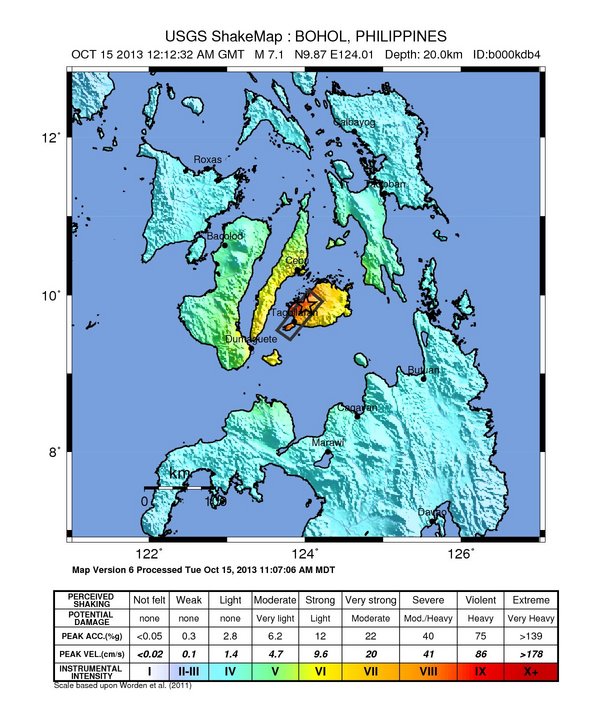It has been a busy and exciting week here at the British Red Cross.
The week began with the earthquake in the Philippines. A 7.1 magnitude earthquake hit Bohol, Philippines, close to the major city of Cebu. The team were on hand to quickly draw information from multiple sources, including from the US Geographical Survey (below).

What is a ‘Data Scramble’?
Rapidly drawing map information from many sources is useful to help the internal Red Cross response to a disaster. This is known as a ‘data scramble’ and involves a team of several people all looking at different sources to gather information.
At the beginning of each emergency, various entities scramble looking for data sets to aid in their response. According to United Nations OCHA, it is beneficial to have these entities virtually coordinated during their respective scramble efforts so as to avoid duplications of efforts.
In this case, the team used a shared online document to upload information, which meant we were all quickly able to see the information that others had gathered. In a disaster, information has to be provided rapidly, usually towards a deadline of 1 hour.
In the immediate aftermath of a disaster, there is a range of online mapping information which can be useful – including maps showing the impacts, population density, historical exposure, land use, and economic exposure.
It all goes to show that technology can be a vital tool for responding to disasters.
Once the task was completed, we did an analysis of the process to see where it could be improved next time, and gathered feedback from the team. Guidelines are available online from agencies such as the UN.
Exposure to disasters is increasing
There is evidence that exposure to disasters increasing around the world, driven by forces such as population growth, deforestation and climate change (see the IPCC Special Report on Extreme Events). Socio-economic factors interact with climatic factors to make people vulnerable.
This shows there needs to be greater international effort and attention on risk reduction, including forecasting, early warning systems, and long-term risk reduction including poverty reduction.
More to follow next week!